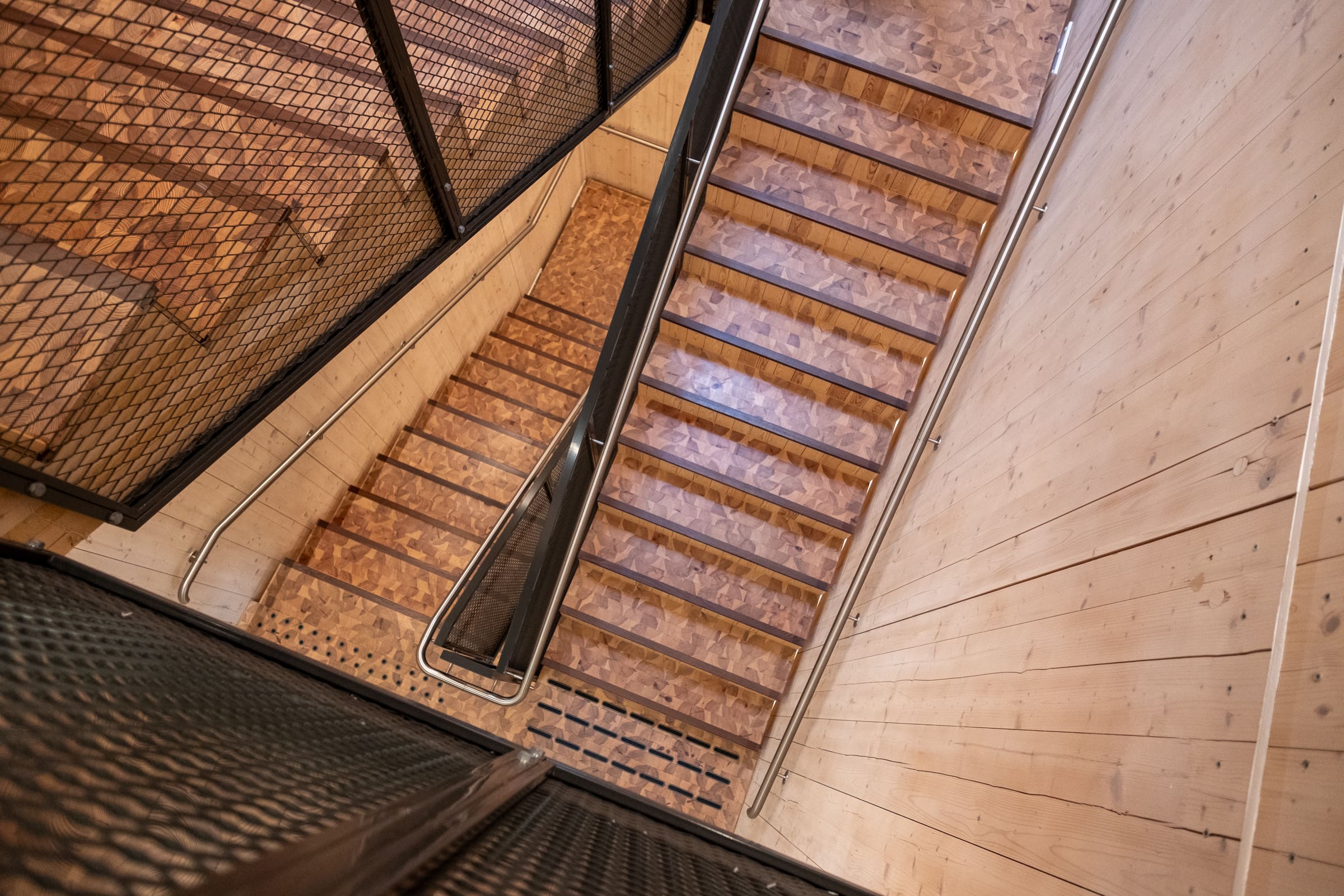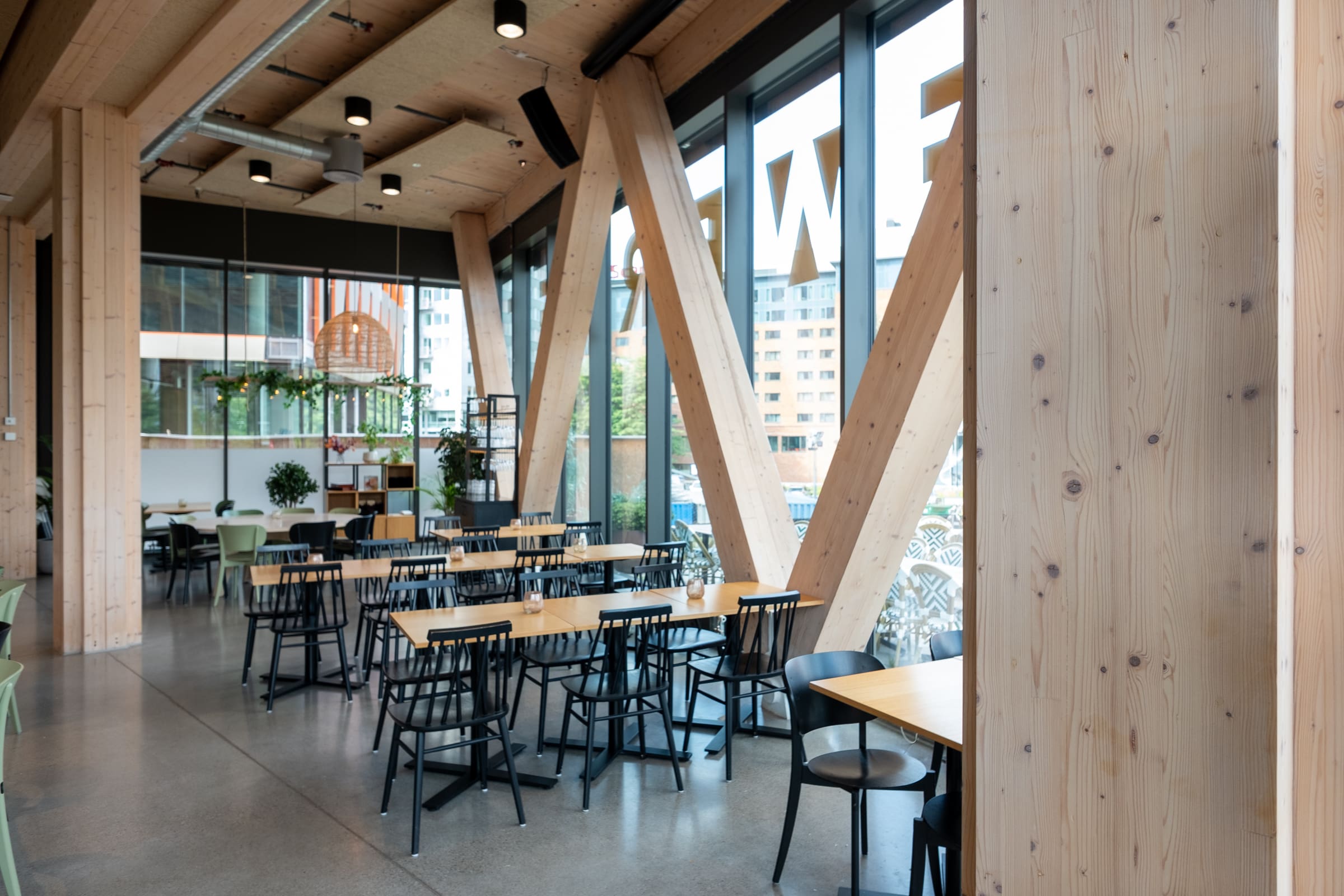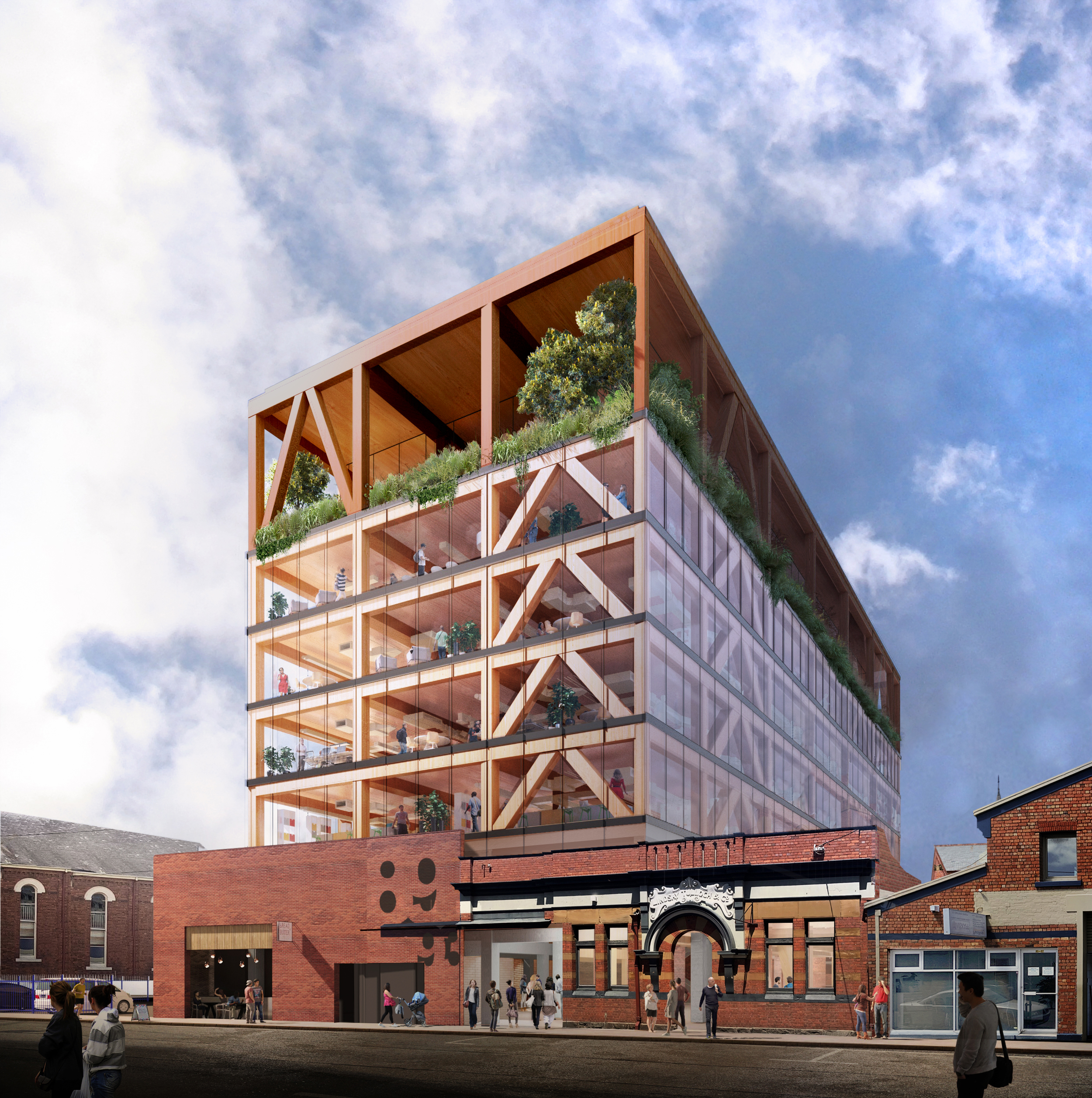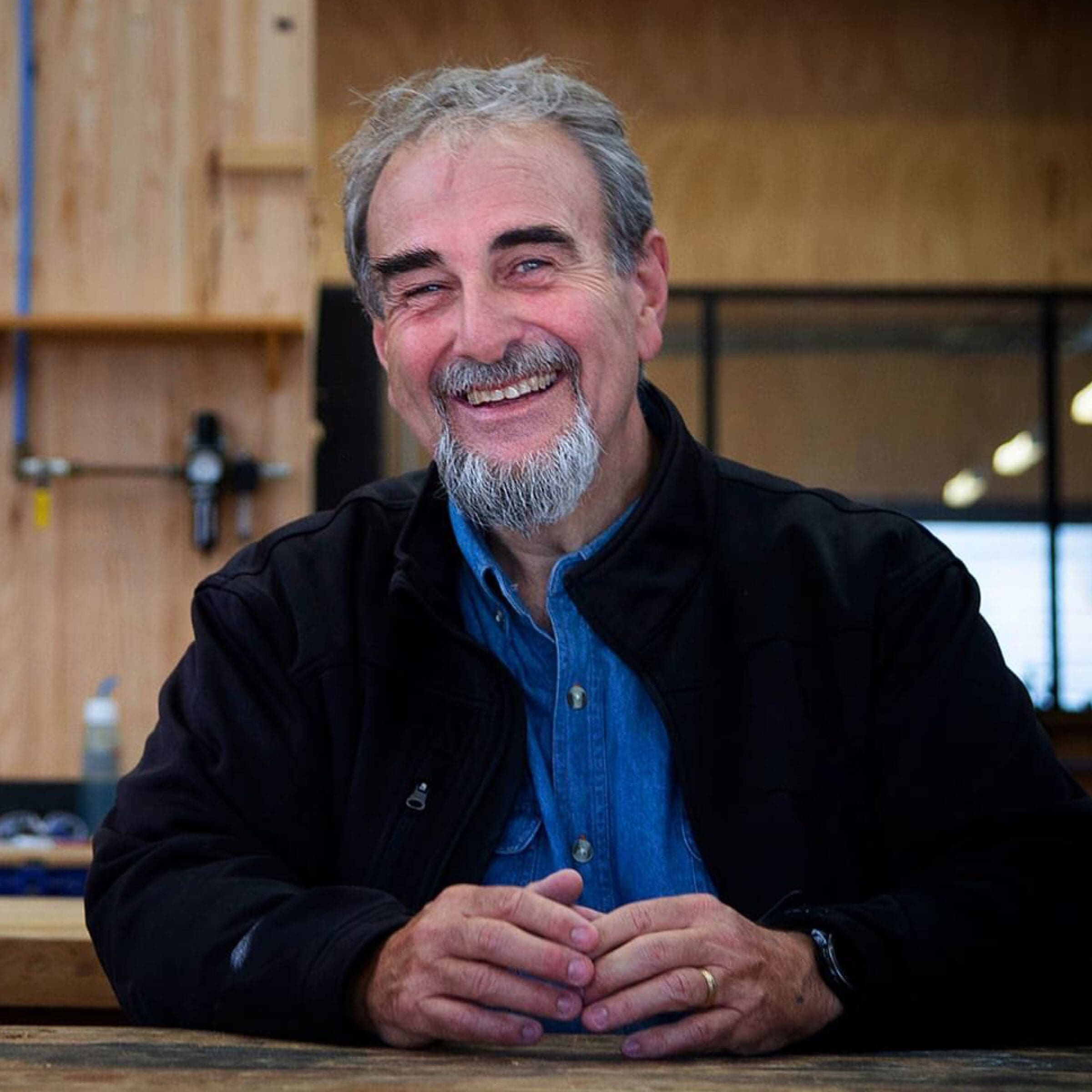Valley Wood Project – Pioneering Timber Innovation in Norway
In 2019, the completion of Oslotre’s Valley Wood project marked a significant milestone in Norway’s architectural landscape. Standing as the largest and tallest timber office building in the country, this seven-story structure pushed the boundaries of timber construction, showcasing innovation and precision in design and execution. Known for pushing the boundaries in timber architecture, Oslotre’s Valley Wood building serves as a testament to the advancement of construction techniques and highlights Oslotre’s expertise in timber construction and their commitment to healthy, durable and sustainable architecture.
While the construction techniques used in Valley Wood are no longer advanced by Oslotre’s standards, they still serve as a best-practice case for prefabrication and precision yet to be adopted by many developers.
Setting New Heights in Timber Construction
With a height and scale unprecedented for a timber building in Norway in 2019, it represented a departure from conventional building materials towards sustainable and eco-friendly alternatives. The decision to utilise timber as the primary material underscored a commitment to environmental stewardship and the promotion of renewable resources.
One of the key innovations of the Valley Wood project was the achievement of expansive floor spans, reaching up to seven and a half meters between beams. This method allowed for larger, more flexible floor plans, enhancing usability and spatial efficiency. The structural design incorporated glulam and cross-laminated timber (CLT), with a double beam system supported by single columns.
Oslotre CEO, Ona Flindall, says that while their timber design methods and construction have evolved in the five years since the establishment of Valley Wood, their approach in 2019 not only provided structural integrity but also facilitated rapid assembly on-site.
“Our way of thinking about the structural logic of timber buildings, the way we work with the infrastructure within the building and how we work with timber is very different now from what we did in 2019,” says Flindall.
“The learning curve has been incredibly high for our office, so we’ve come a long way from what we did in Valley Wood but it’s also incredibly important for us because it shows the level of precision and the level of prefabrication in a timber building. On the job site, it was an incredibly fast build and an easy assembly process,” says Flindall.
A hallmark of the Valley Wood project was the meticulous prefabrication of timber components. All beams were pre-perforated to accommodate technical services such as ventilation, plumbing, and electrical systems, ensuring seamless integration and efficient installation. This prefabrication strategy minimised waste, reduced construction time, and enhanced the overall quality of the building.
To address the challenge of spanning long distances between beams, a composite floor slab consisting of timber and concrete was employed. This solution capitalised on the strengths of both materials, with CLT providing tensile strength and concrete offering compression resistance. The result was a robust and acoustically insulated floor slab, measuring 245 millimetres in thickness, capable of spanning the extended distances required for the project.
“It’s a flexible workspace and it has some great potential and great qualities but it’s quite far from the logic we now use. And that’s key as well, finding the right solution for the right project. It’s not one-size-fits-all when it comes to timber,” says Flindall.
“We’re still in a phase of developing those timber solutions for different uses and needs. There are a lot of products that we haven’t seen yet, there’s a lot more to come in terms of timber solutions. We’re still in the early phase of development so to see where we’re going to be at in the next couple of years is very exciting,” says Flindall.
Adaptability and Future Potential
The success of the Valley Wood project underscored the importance of tailoring timber solutions to specific project requirements. While the building showcased remarkable achievements in timber construction, including precision prefabrication and composite flooring systems, it also highlights the need for continued innovation and experimentation. As timber construction evolves, there remains vast potential for exploring new materials, components, and typologies to meet the diverse needs of modern architecture.
Valley Wood stands as inspiration for innovation and sustainability in the construction industry, showcasing the transformative power of mass timber. As Norway leads the way in embracing timber as a primary construction material, there is immense potential for similar projects to take root in other regions, including Australia, where the establishment and growth of local mass timber manufacturers are already paving the way for a greener future.
With ongoing research and development, architects and engineers are poised to unlock new possibilities in timber construction, ranging from residential buildings to commercial complexes like the St. Luke’s building in Launceston. The journey towards a more sustainable built environment is ongoing, and projects like Valley Wood exemplify the potential for mass timber to lead the way towards a greener, more resilient future.
















